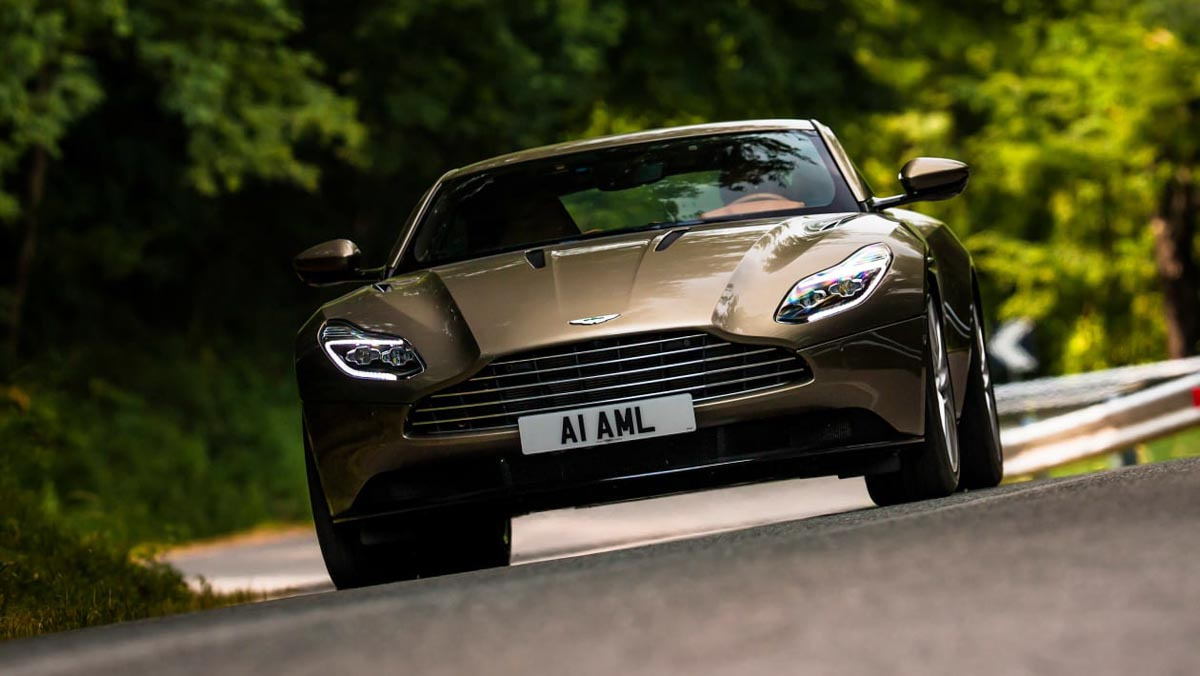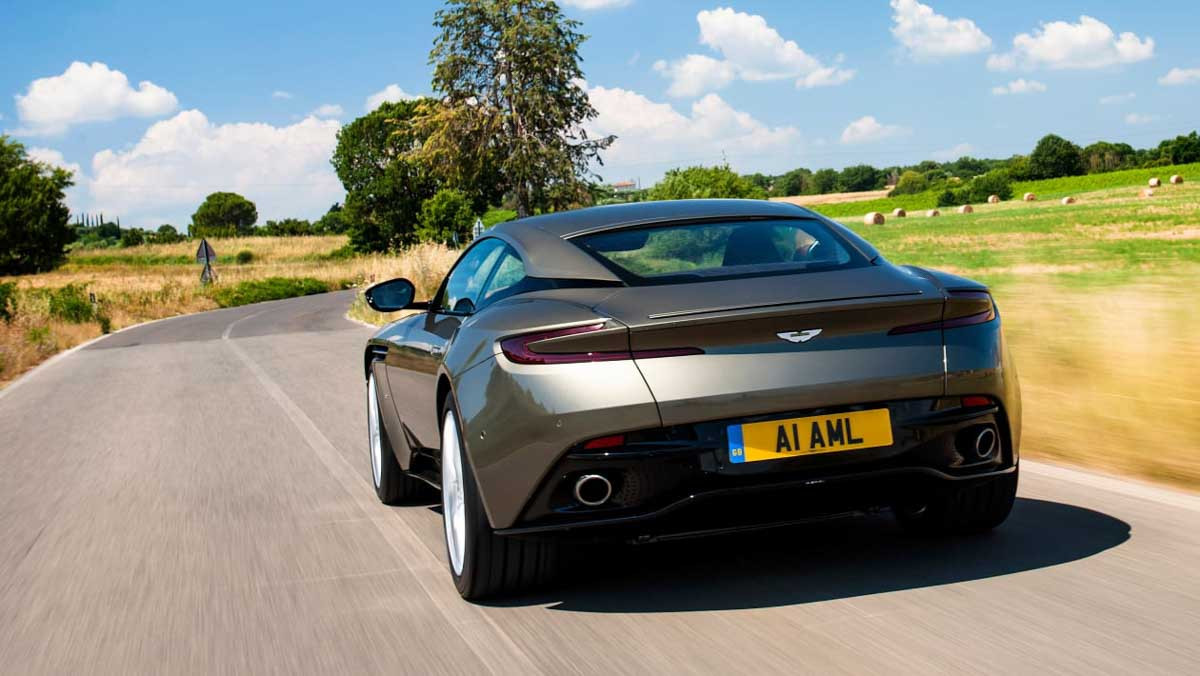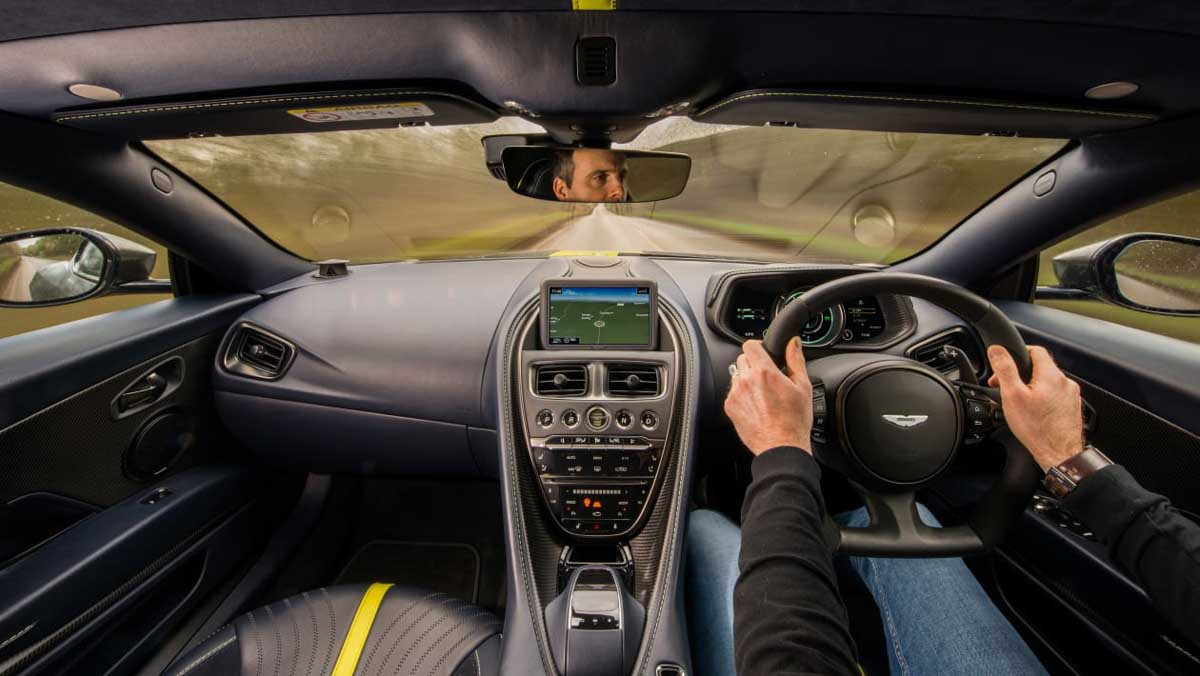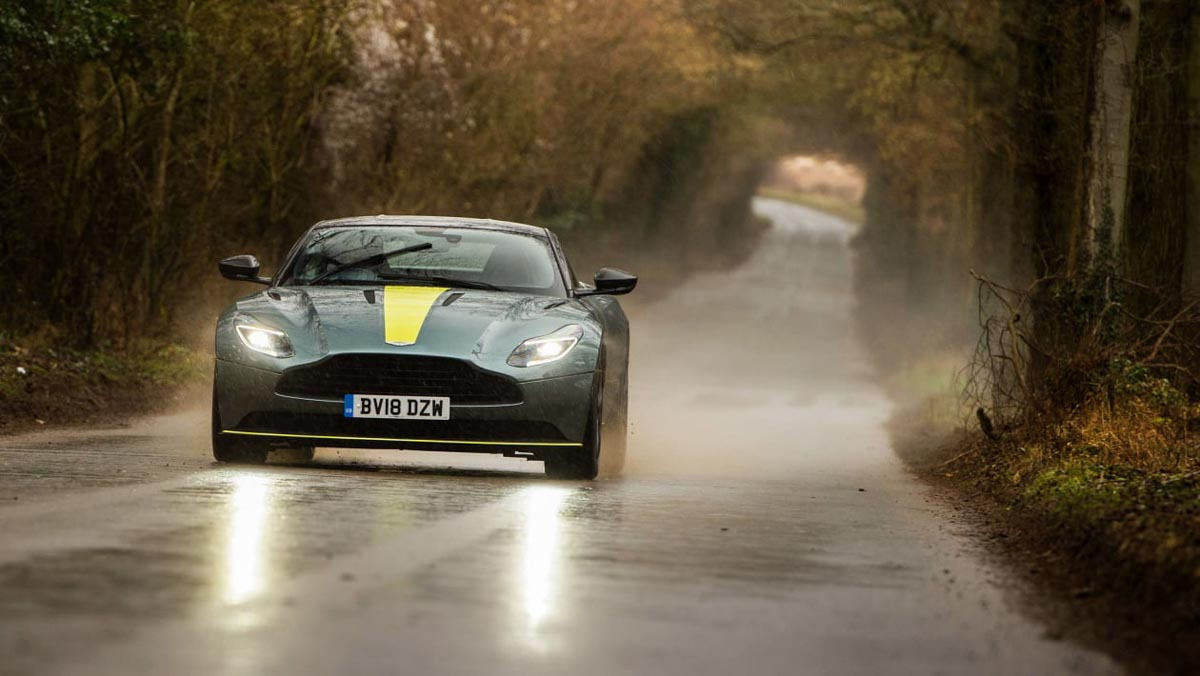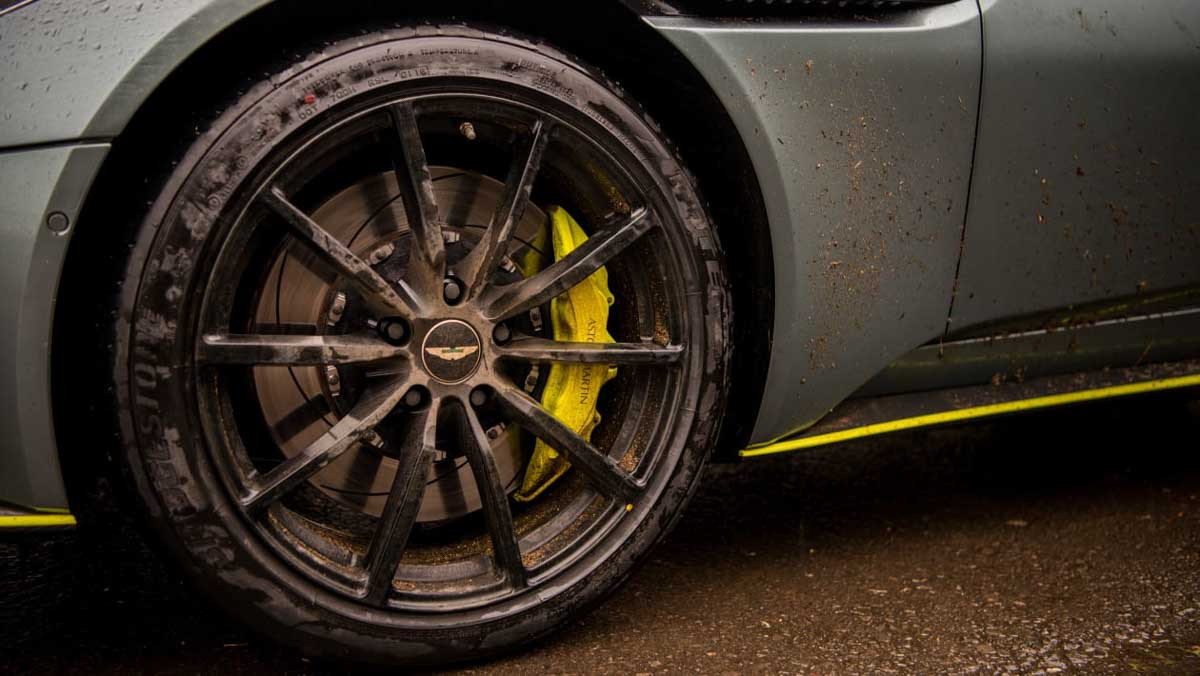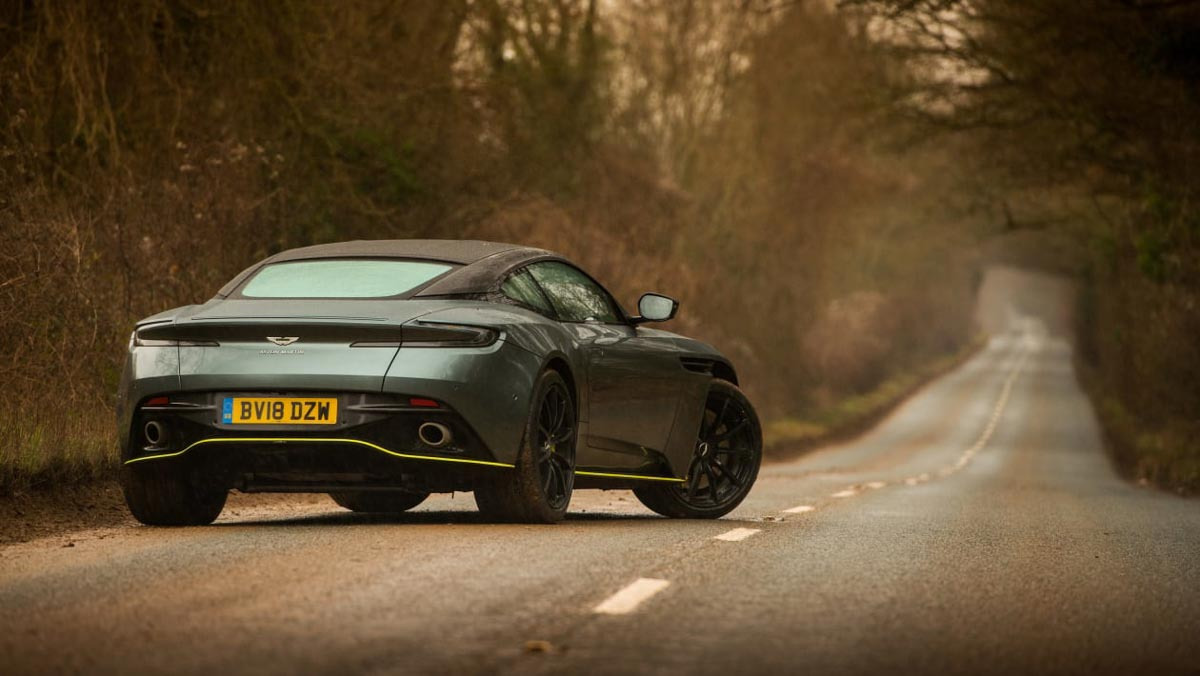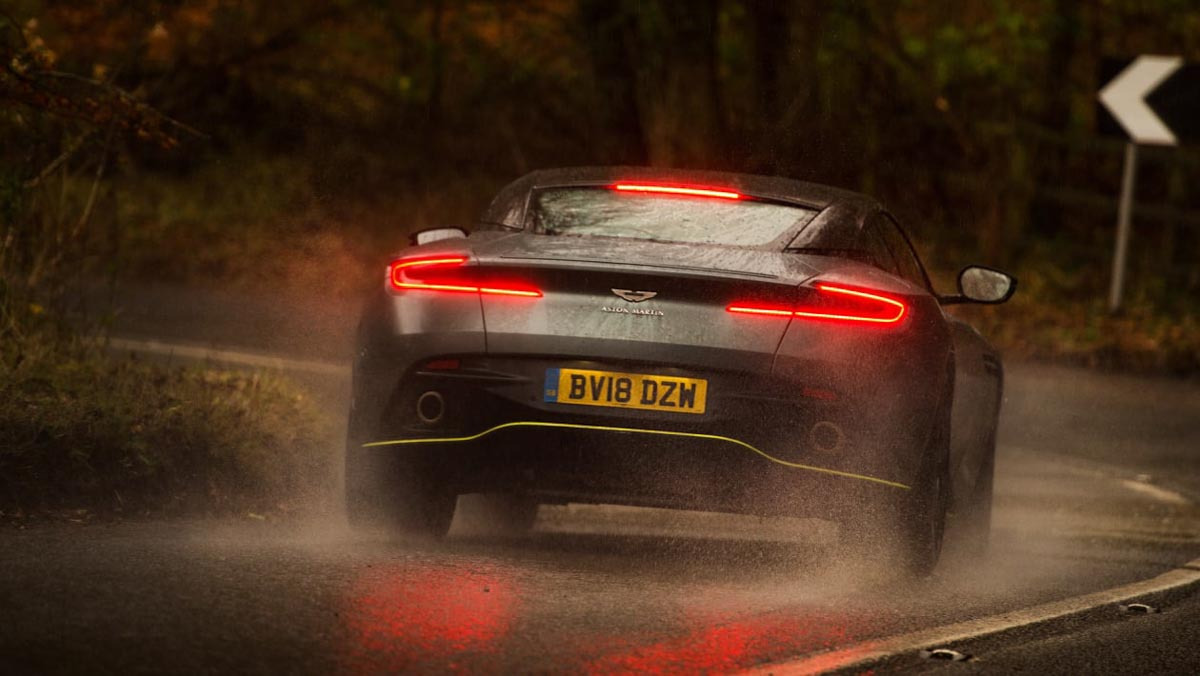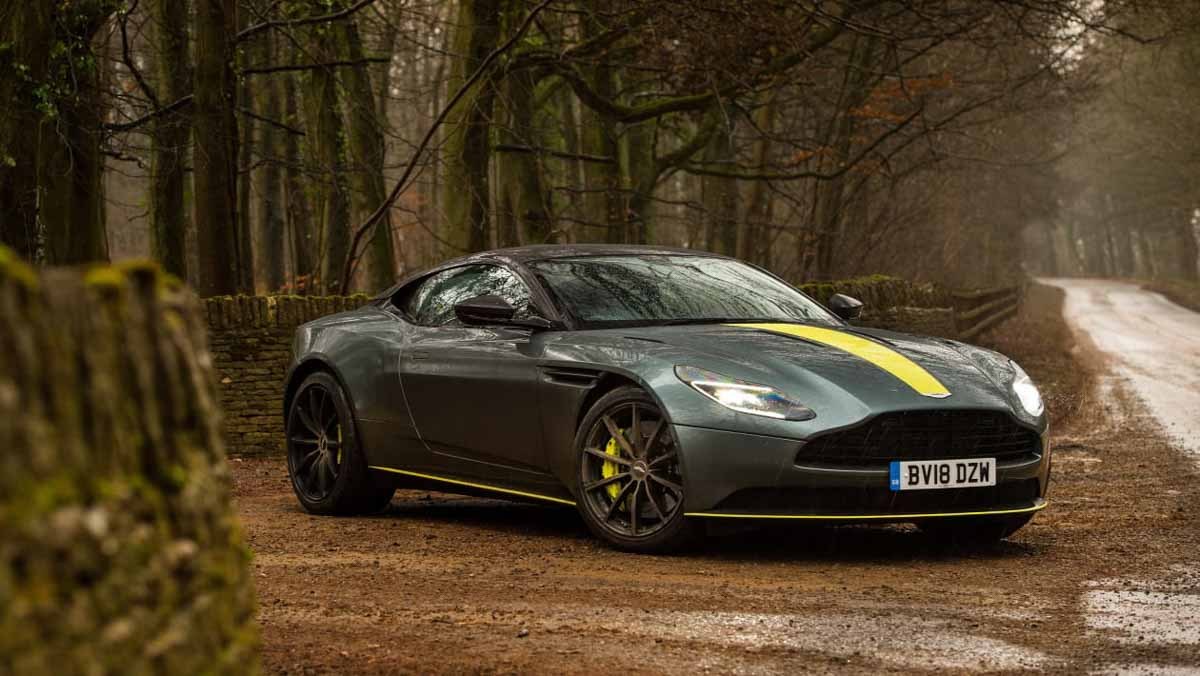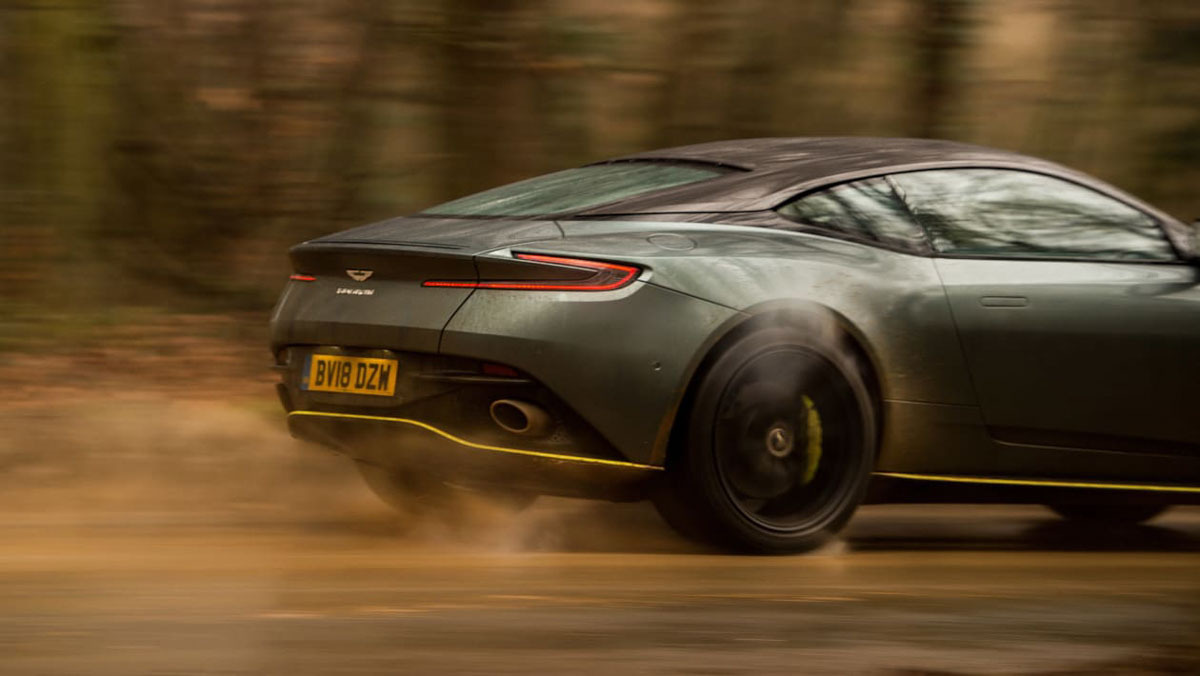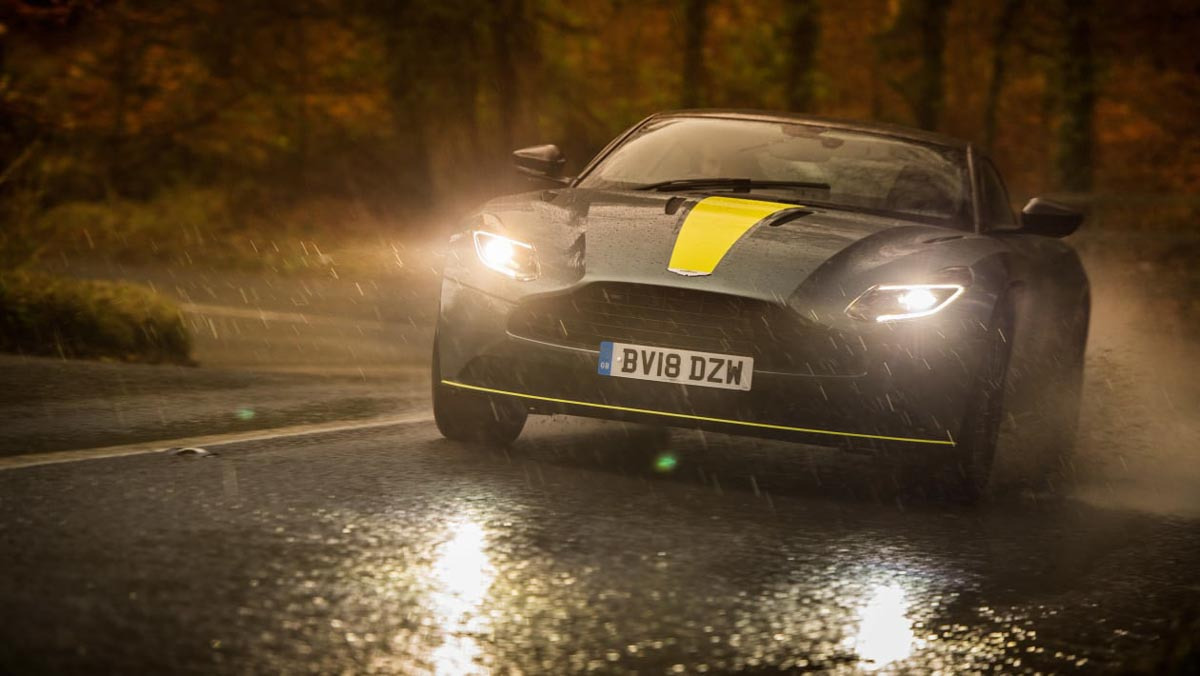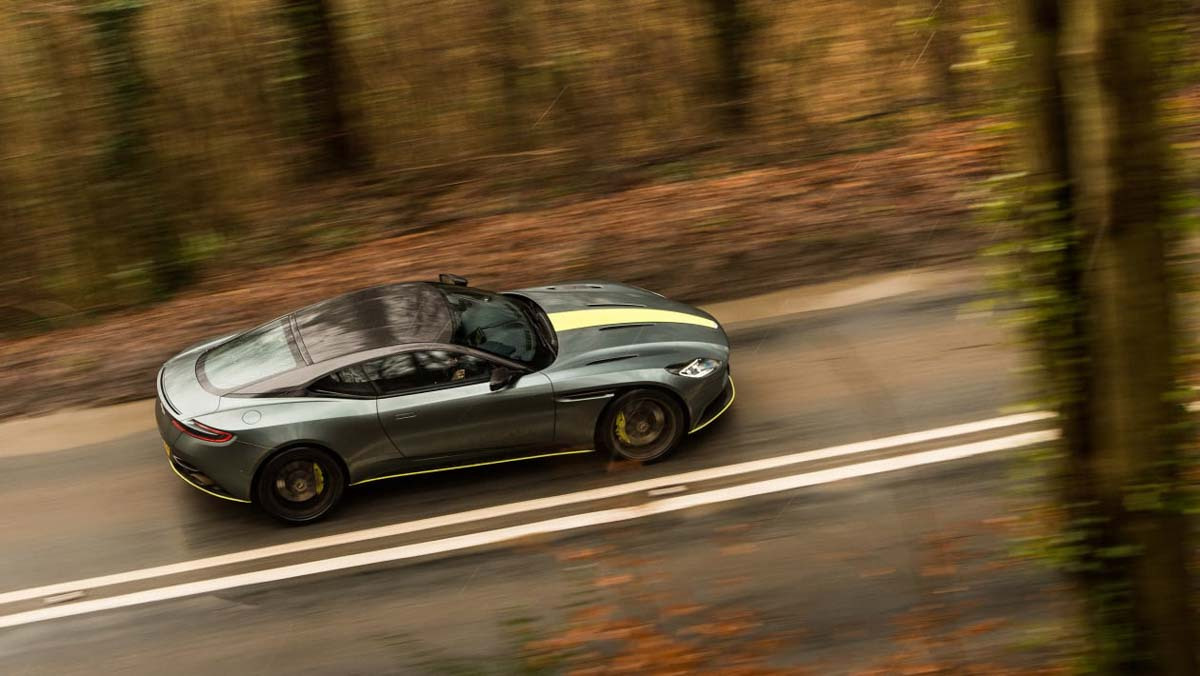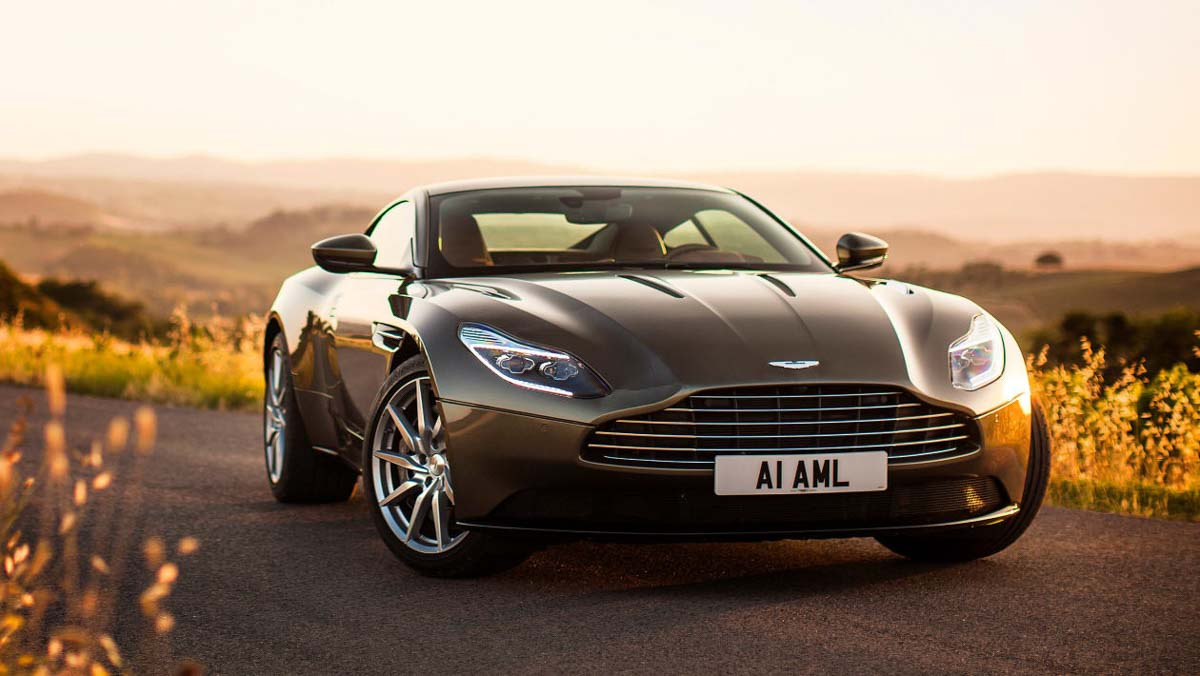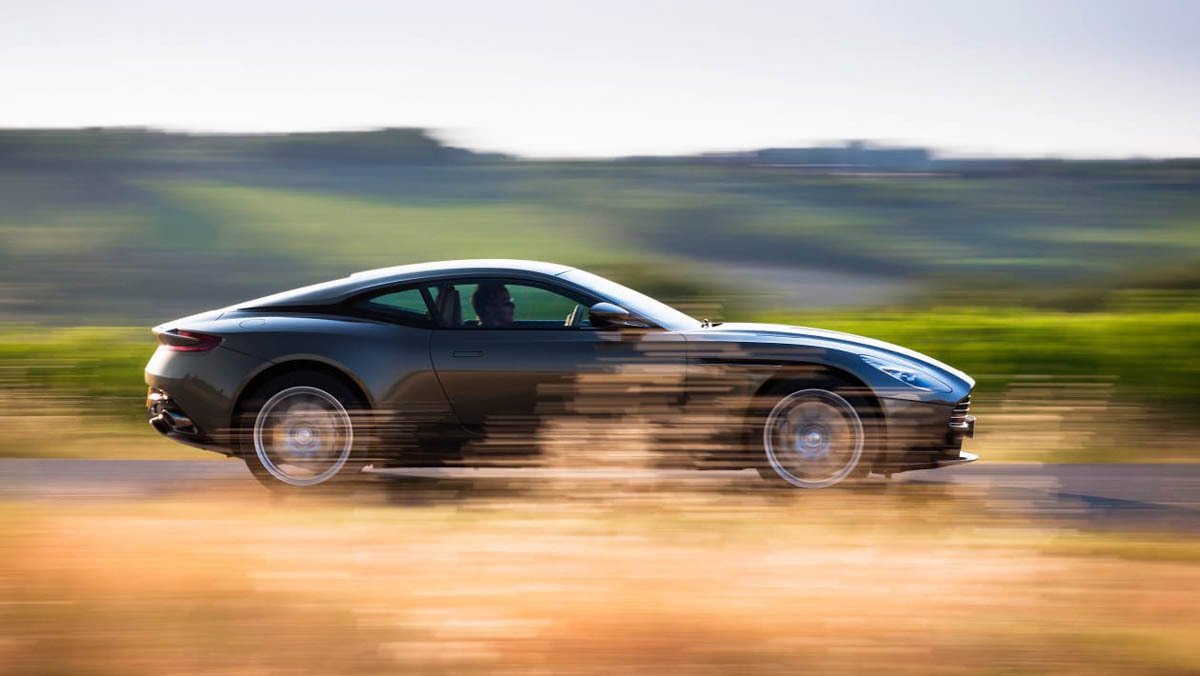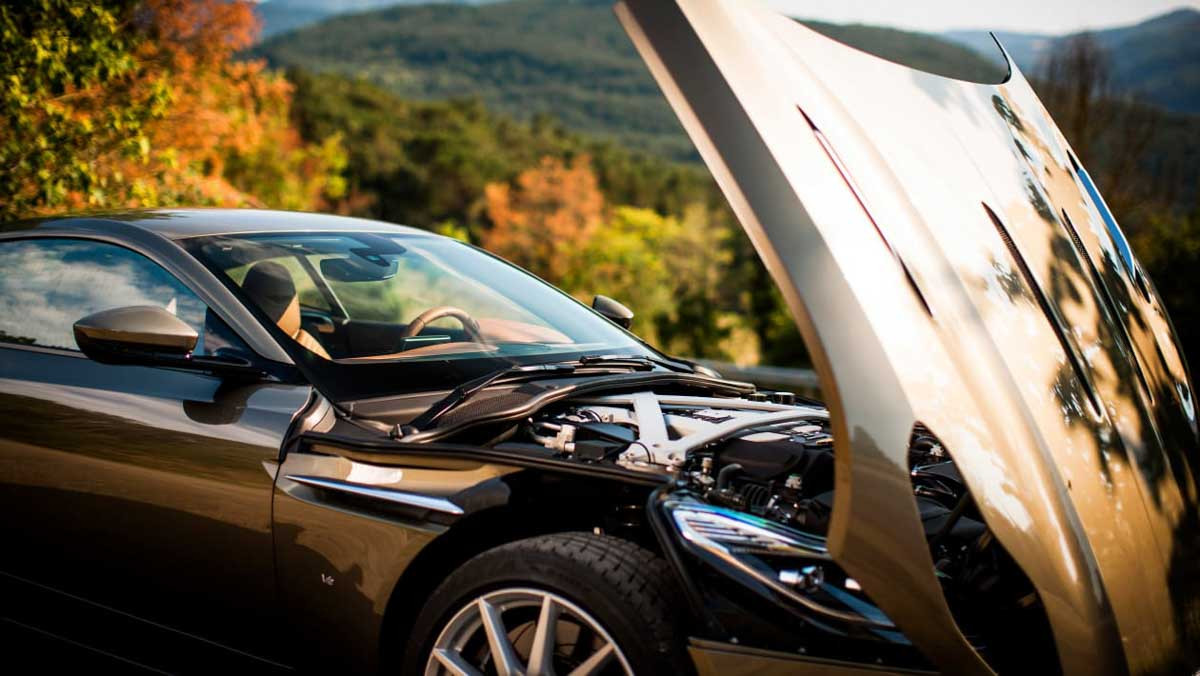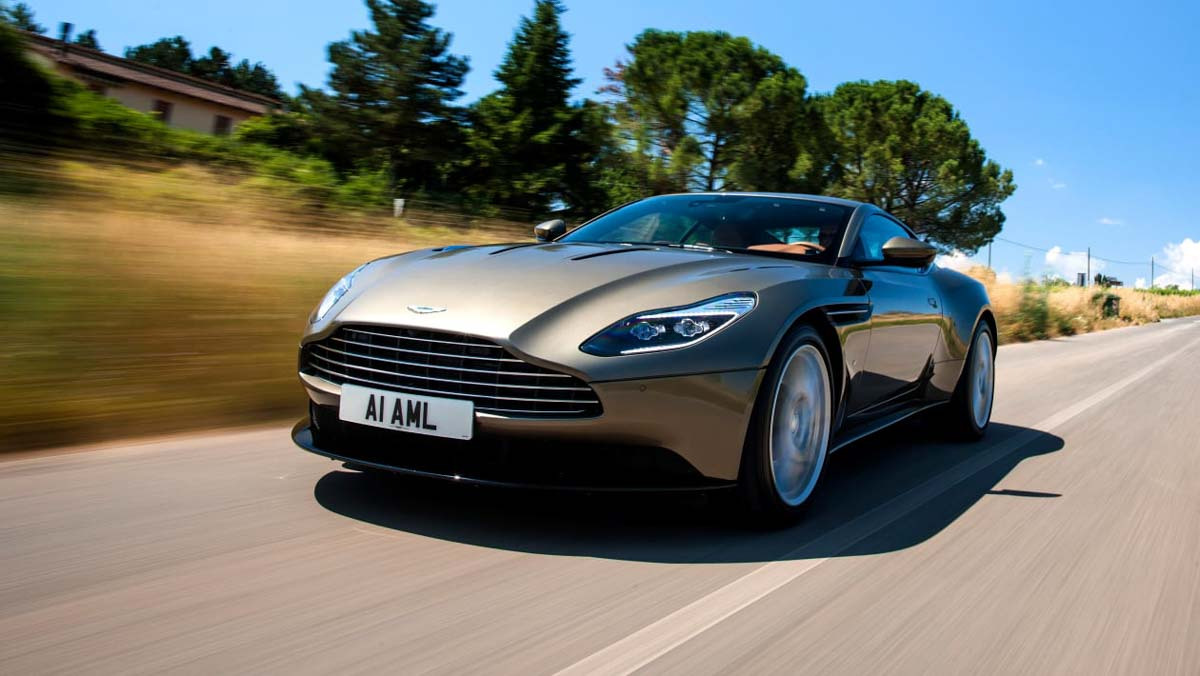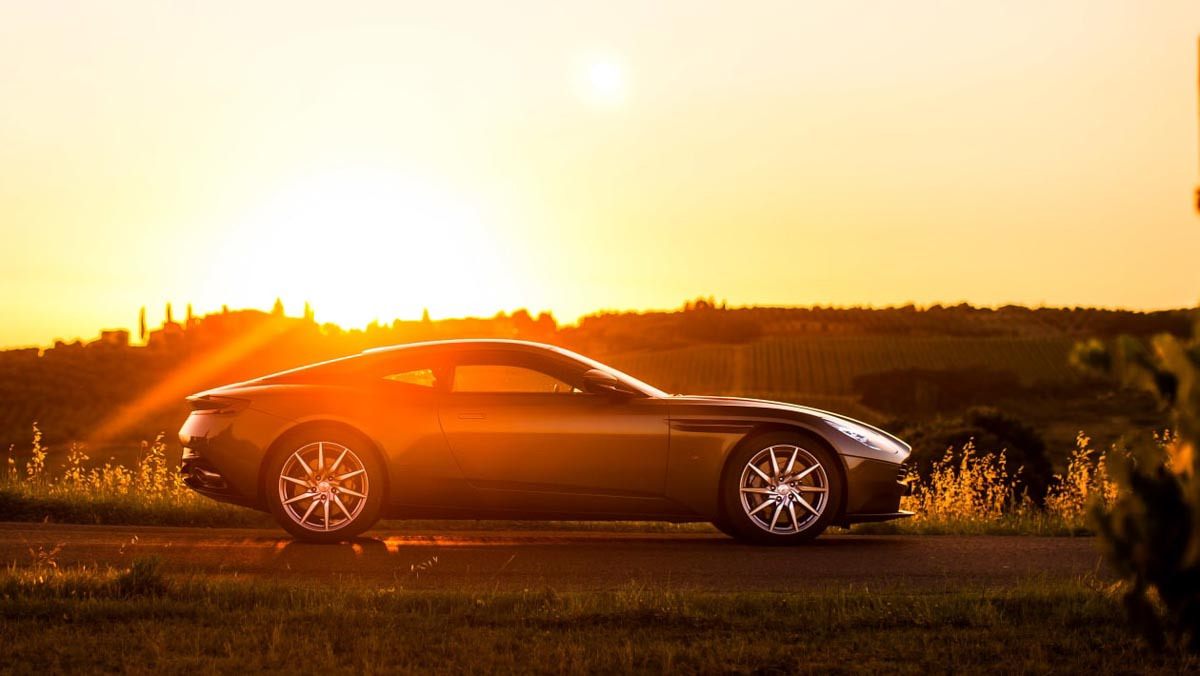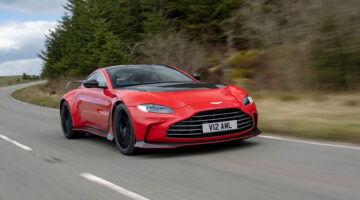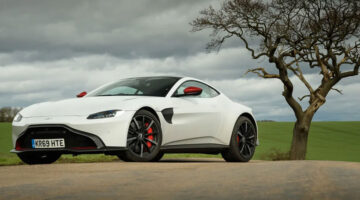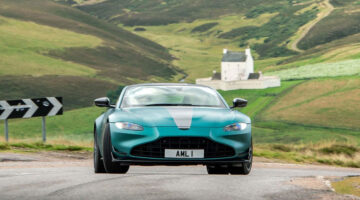The DB11 is a fantastic GT car with a superb balance that is best on bigger roads
| Lovely chassis balance, effortless performance, sumptuous materials | |
| Not as rounded and competent as rivals, build quality lacking |
The DB11 was the beginning of a new era for Aston Martin, introducing turbocharging, a heavily updated chassis design and Mercedes-influence inside the cabin to an Aston Martin range that would soon expand to four individual full-production models.
The DB11 is the centerpoint of that range, surrounded by the smaller and more aggressive Vantage, the flagship DBS Superlerggera and the new DBX SUV. The DB11 is now the oldest Aston Martin on sale, but also perhaps the one that most embodies the brand’s ethos as it moves to a new generation of models and corporate leadership.
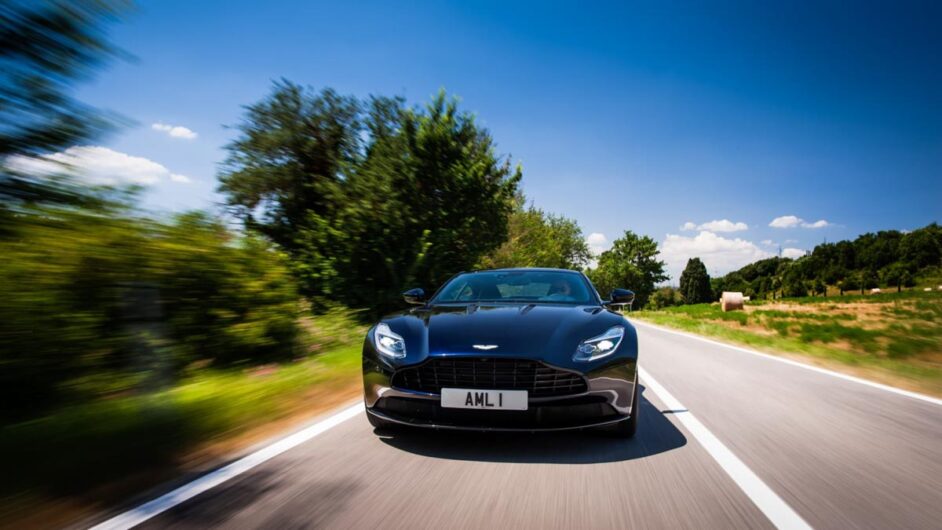
In 2020 the DB11 is available in three forms, starting with the entry-level V8 in both Coupe and Volante form, and moving on to the DB11 AMR which packs a bigger V12 punch. The ‘standard’ DB11 is no longer available with a V12, but that’s no bad thing given the vast improvements the AMR’s suite of changes brought to the model last year.
The concept of the grand touring car itself has evolved from its historical roots in recent times though. While the GT was once exclusive in its offer of high performance without a deterioration in comfort, this is no longer something it can claim exclusive rights to. Performance saloons and estates and even the occasional SUV strike a fine compromise to arguably greater effect today, leaving the traditional GT car with just one ace up its sleeve.
That ace is style. Only a GT can offer the sort of glamour and presence typically associated with its most illustrious predecessors – floating down to the French Rivera just isn’t quite the same in a fast estate. This is something the DB11 along with only a few direct rivals still pull off, and it’s what keeps Aston Martin’s creation relevant in a high-end market where diversity reigns supreme.
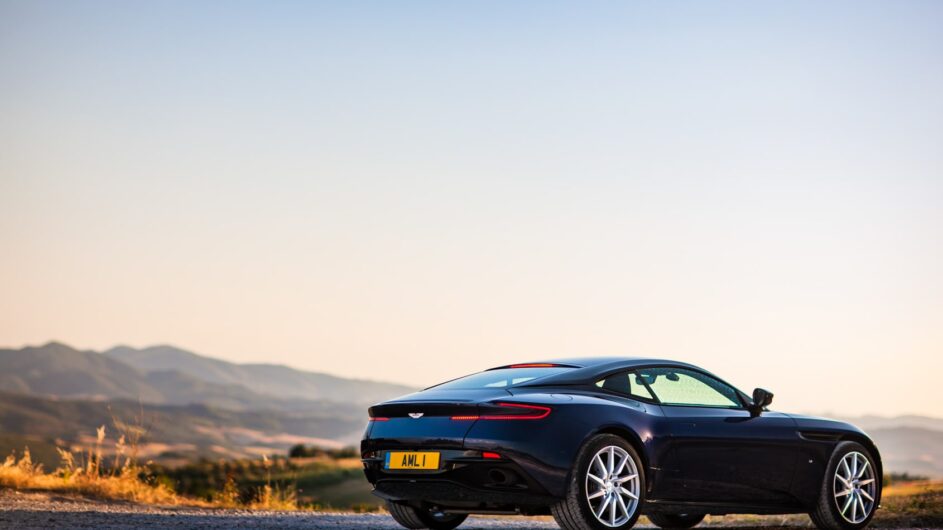
Prices, specs and rivals
An Aston Martin is always reassuringly expensive, especially when in four-seater form, and the DB11 is no different. The V8 model will set you back from $192,900, with the soft-top Volante model costing an extra $16k at $208,600. The AMR starts at a more substantial $228,255, but given its homegrown V12 engine and chassis upgrades seems like a reasonable increase. Aston Martin won’t sell you a V12-powered DB11 Volante, but the $293,500 DBS is now available if you want the ultimate V12 drop-top experience.
Given Aston Martin doesn’t have a big parent company to lean on, it does perhaps lack some of the modern-car technology one would of expect like matrix headlights or autonomous driving aids, but Aston makes up for this with an exceptionally high standard of material quality and the world of bespoke touches that only smaller companies can provide. There’s an impressive array of standard finishes inside and out, but get creative with Aston’s Q personalisation department and the possibilities are almost endless.
When it comes to rivals, the twelve-cylinder GT is becoming an increasingly rare species, with only Bentley and Ferrari offering direct alternatives to the big Aston. The Bentley Continental GT is the DB11’s most direct rival, and like the DB11 is available in both 12- and 8-cylinder options. It starts at just $1300 more than the Aston for the entry-level V8 model, and has the legs on the Aston’s power output, is bigger, more lavishly equipped and has the same exceptionally high material quality.
Backing the Aston into even more of a corner is the Bentley’s higher standard of tech and, it must be said, build quality. The difference between the two cars is more nuanced than the extra rear-seat legroom and inches to the infotainment screen though, as the Bentley is a markedly bigger and heavier car. It is a more settled and refined GT next to the Aston which holds it’s sporting nature as more of an essential attribute.
Ferrari’s GTC4Lusso and Lusso T are two more full-sized four-seaters, again in both V8 and V12 flavours, but the $219k and $258k starting prices make them a considerably more expensive exercise even before you turn to Ferrari’s typically extensive and expensive options list. They’re also bigger with four full-sized seats and a proper boot, as well as having the boon of a body which opens up into an estate-like space.
Engine, gearbox and technical specs
The DB11’s range kicks off with a familiar engine, but from an unfamiliar source. Like the Vantage and DBX, the ‘base’ DB11’s 4-litre twin-turbo V8 is the same M178 AMG unit that features in a big cross section of AMG models. While it may sound a tad less exotic than the V12, if you’re going to share an engine with someone, it might as well be the best, and AMG’s V8 is close to it.
Power is rated at 503bhp, but given that variants of this same motor can top that figure by upwards of 100bhp, it feels under-stressed and good for its claimed performance figures. Torque is also a core attribute of AMG’s V8, peaking at 498lb ft over a massive rev plateau from just 2000rpm.
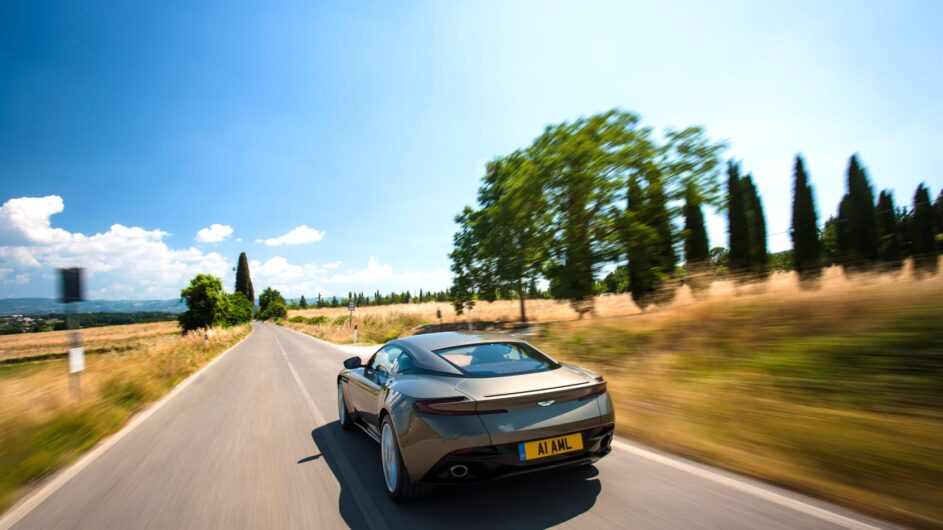
The V12 found in the AMR is all Aston Martin by comparison. It’s a bespoke twin-turbo, all-alloy, quad-cam, 48-valve, 5.2-litre V12 found only in this and the flagship DBS Superleggera. In AMR form, it outputs 630bhp and 516lb ft which represent a big on-paper jump over the V8 models.
In order to keep in compliance with increasingly stringent emissions regulations, the V12 has cylinder deactivation (Intelligent Bank Activation in Aston speak) and stop-start. Drive on all models is sent to the rear wheels via ZF’s ubiquitous but very good eight-speed automatic gearbox. There is also a mechanical limited-slip diff, and active torque vectoring using the brakes, which are steel as standard.
Performance and 0-100 time
The DB11 is a quick car in all its forms, thanks to a consistent combination across the engine range of big-torque figures and the sharp shifting transmission. The entry-level V8 coupe will hit 100kph in just 4sec, which might only make it as quick on paper as a 911 Carrera, but it’s more than fast enough to never feel anything less than unstressed on the road. Thanks to the hot-V turbo layout, the power unit will pick up with incredible ease in the mid range, giving the DB11 an impressive surge of acceleration no matter the situation.
Unlike some modern turbocharged units though, the V12 rewards you for exploring the upper reaches of the rev range, while eliciting that trademark Aston Martin bark. In fact the car is far louder outside the cabin than in, which is just about the only reason you would want to get out. Get the V12 into the upper echelons of the rev-band and its power advantage is clear though.
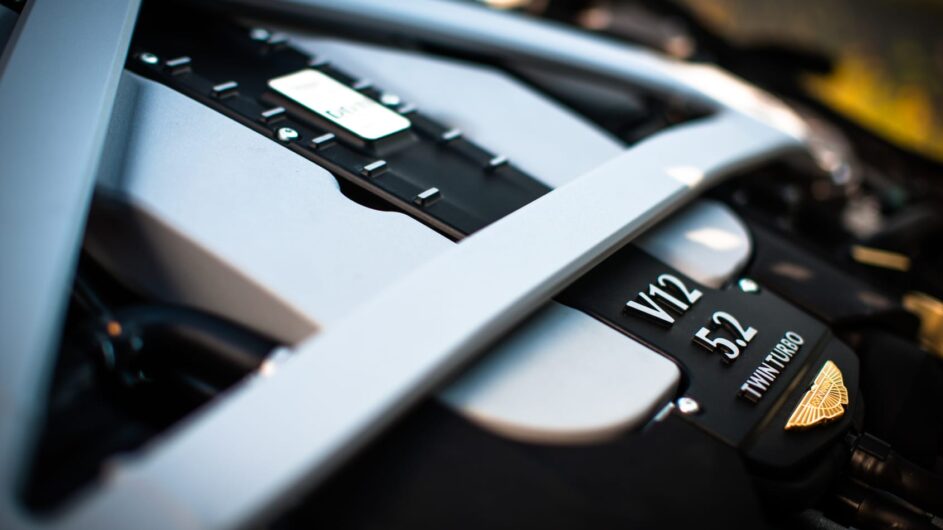
Ride and Handling
The DB11 is most definitely a GT car. There’s plenty of length in the suspension travel which gives it a wonderfully relaxed feeling over bigger bumps and makes it a very nice place to do a long journey (just as well, given that we covered about 2500 kilometres in one while delivering it to the launch location in Tuscany). Despite this focus, the DB11 still has that underlying quality of engineering and setup defined by Matt Becker-era Astons.
The steering is surprisingly quick and the balance of the chassis is beautiful. Throw it at a fast corner and you get this wonderful feeling of the car leaning into its outside rear wheel and encouraging you to get on the throttle early to drive hard through a corner. It really does inspire confidence and even over the limit you seem to have plenty of time, with the quick steering easily stabilising the angle.
Push the front end hard on a slightly tighter road and you will hear the front tyres chirrup as they reach their limit, but the long nose never washes out. There isn’t a great deal of feel through the steering, but it is accurate and there’s a definite sense of solidity and connection that allows you to push the big car surprisingly hard.
Only on a bumpy British B-road does the DB11 feel less happy being hustled because although the fundamental balance remains, the rapid fire nature of the bumps means the damping doesn’t always have time to really control the long travel between hits. Because it’s not ruthlessly tied down it can also feel a little floaty as it moves through its suspension on turn-in.
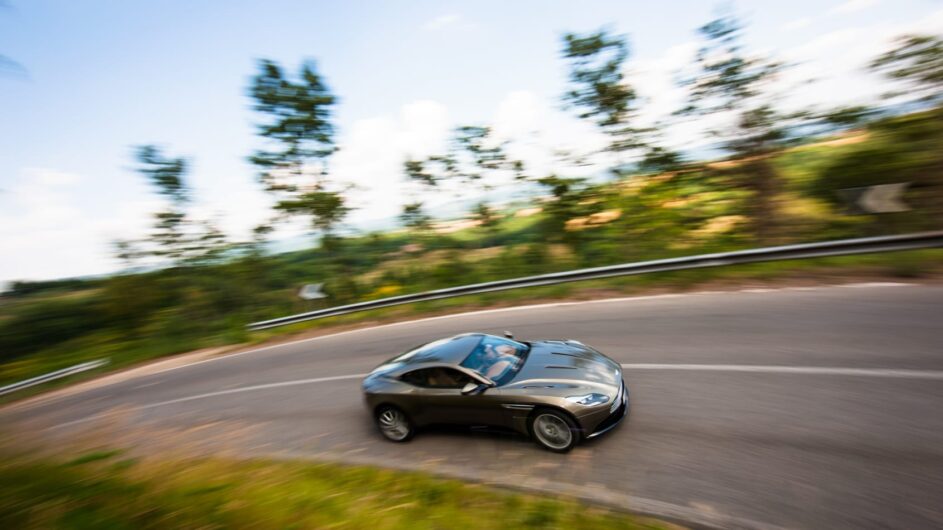
The V12 engine is mighty and really gets into its stride around 4000rpm. In fact the mid-range is where you have to live to get the best from the V12. It can often feel tempting to downshift an extra gear on the way into a corner, but you’re better off leaning on the readily available mid-range torque and leaving yourself more headroom with the revs as the V12 doesn’t have an expansive top end to reach into like the naturally aspirated cars of old. Move up to the Sport or Sport Plus settings and the exhaust note comes alive too. The double-glazing muffles the sound a bit inside the car (as it’s meant to) but the soundtrack is most definitely distinctly Aston, despite the addition of the turbochargers.
The V8 model by comparison trades on a finer balance, with less mass in front of the driver to manage, it turns in with a little more enthusiasm and verve, even if the grip levels are mostly even.
In any form, the DB11 is a rather lovely thing. On our test it proved a great car for eating the kilometres across France, Belgium, Germany, Switzerland and Italy and was then very enjoyable on the more flowing roads of Tuscany when we got there. Tighter, bumpier roads are not really its thing, but that’s fine. Aston is determined that each of its new generation of cars should be distinct both in terms of looks and dynamics and the DB11 fulfils the GT role very well indeed.
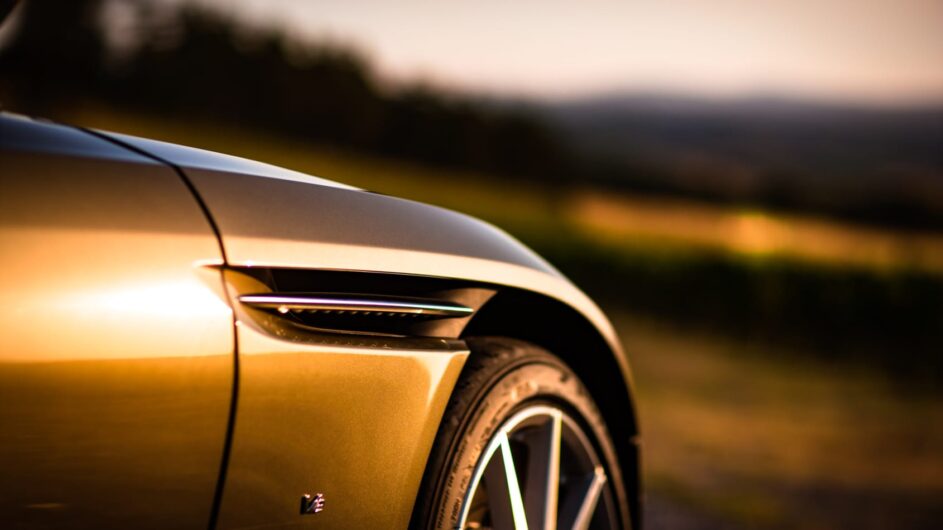
L/100km and Running costs
Not exactly a strong point for a grand tourer, especially since the more ruthless WLTP regulations came into force, the DB11 is a thirsty car on and off paper. The DB11 AMR returns between 15-13L/100km on the new WLTP cycle, dropping fiercely into the teens when pushed. CO2 has also been reduced, dropping to 270g/km, although the DB11 still occupies the top tax bracket.
The realities of Aston Martin ownership may not be cheap, but then it is not really any worse than competitors, with the Bentley Continental GT Speed still only registering a similar 15-13L/100km. Servicing too will be relatively expensive if you’re trading up from something a little less grand. The V8s are marginally more efficient registering a (broad) 13-11L/100km on the WLTP cycle, but settle on a motorway cruise and mid-to-high 20s is possible.
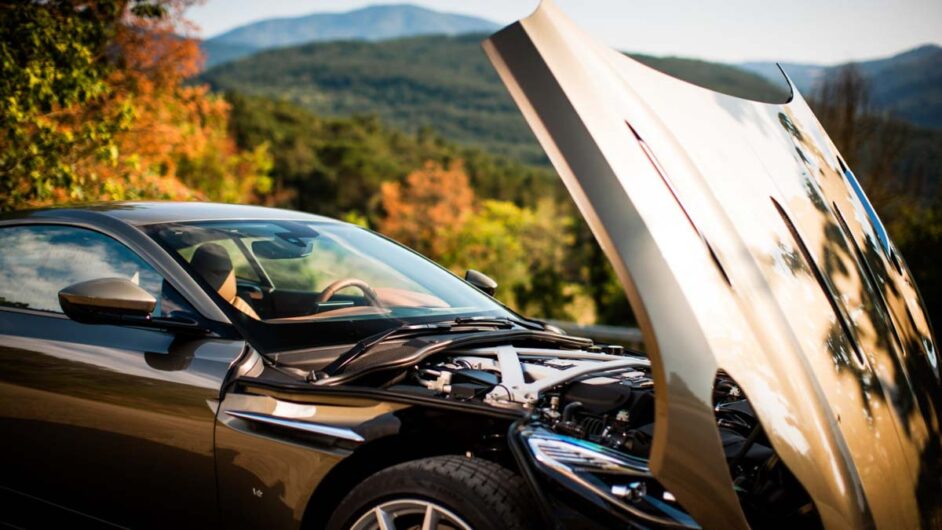
Interior and Tech
Just as with graceful exterior design and endless James Bond references, Aston Martins are also defined by luxurious ‘hand-crafted’ interiors. The DB11 is no different. Swoop inside via the swan-hinged door (that is to say the door rises ever so slightly so to avoid kerbs) and you’re greeted first not with wow-factor tech or groundbreaking interior design, rather the smell of expensive leather. This is no bad thing.
Nearly every surface across the dash, doors, seats, and even roof panel where specified, is leather trimmed and this instantly makes the Aston feel special. Of course while the material quality by-and-large is deeply impressive, the dark side of ‘hand-made’ comes to the fore where subliminal messages from the clangy doors or squeaks and rattles that can often reside in modern Astons. It doesn’t help that rivals from Bentley and Mercedes-Benz are often world-class when it comes to build quality, but it remains an uncomfortable feeling on cars costing as much as a whole flat in many parts of the country.
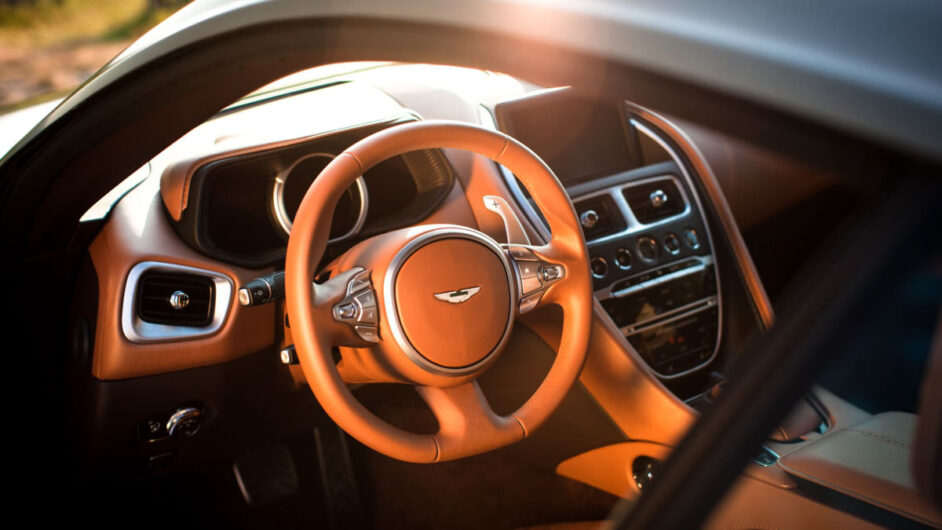
The interior’s design is a little lackluster too, missing the glamour and presence of the Bentley, while in terms of tech the DB11’s set-up is closing in on four-generations behind the latest Mercedes systems on which its based. The car also lacks the latest stand out tech like fancy head-up displays, adaptive headlights or crystal clear infotainment displays.
But what the Aston offers in place of modern-accoutrements is that aforementioned hand-built feeling, and indeed the choice to be able to specify your car exactly as you want to. Many early press-car examples of DB11 and Vantage were specified to show off the sheer level of personalisation options available, climaxing perhaps in the DB11 V8 we first drove back in 2018 which paired a metallic white exterior with a deep purple leather finish contrasted with violent pink stitching.
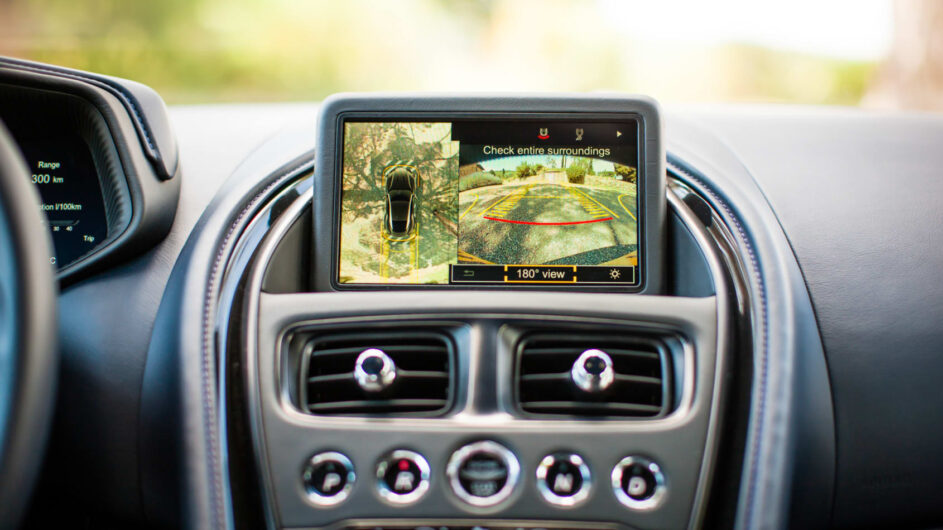
Design
Along with the other Aston Martin firsts introduced by the DB11, it was also the car that debuted a reformed design language under the design leadership of Marek Riechmann. That design language has now been spread across the whole range, and in the process the DB11 has matured into the sophisticated and elegant design Reichmann had envisioned. So long as it’s specified properly.
The front end is defined by the typical Aston Martin grille, bordered by new all-LED headlights and the biggest clamshell bonnet in the business. From here back, the bodywork then contorts and tapers towards the swollen rear arches terminating in a flat rear end that eschews the typical boot flick seen in older Aston Martins.
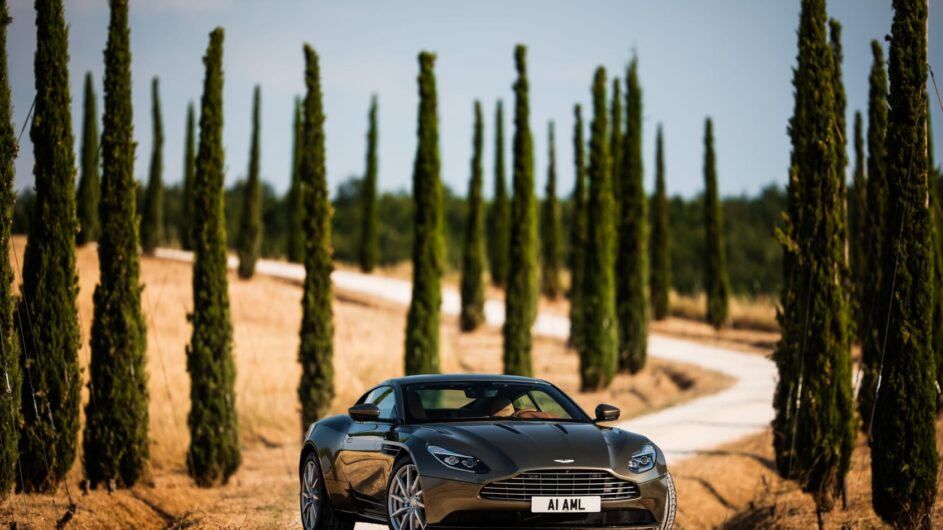
Reichman also decided to visually split the body from the roof section, offering ‘roof strakes’ as Aston calls them, in a contrasting silver or black finish. Combined with small tail lights, the DB11 is more colour sensitive than its more svelte predecessors.
The DB11 Volante is certainly the most successful example of the DB11’s design though, with that controversial roof removed in favour of the compact folding soft-top. Without the visual weight above, the DB11’s aggressive hips have some room to breathe while the redesigned rear deck gives the overall design more structure through the use of deep profiling that frames the cabin. It all looks very well resolved, and when paired with Aston’s flamboyant interior finishes is every bit as glamorous as one would expect of a drop-top Aston Martin.
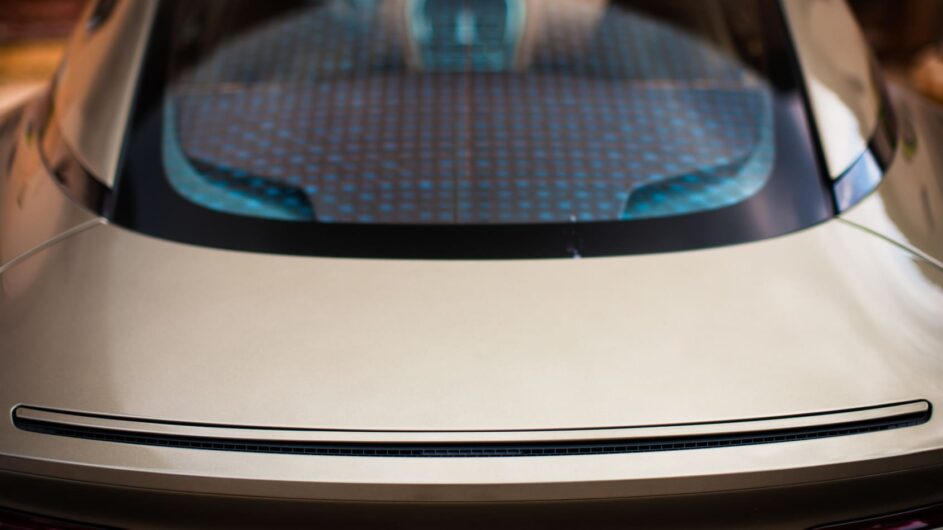
This article originally appeared at evo.co.uk
Copyright © evo UK, Dennis Publishing

